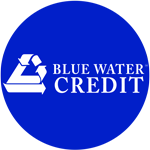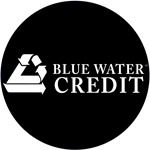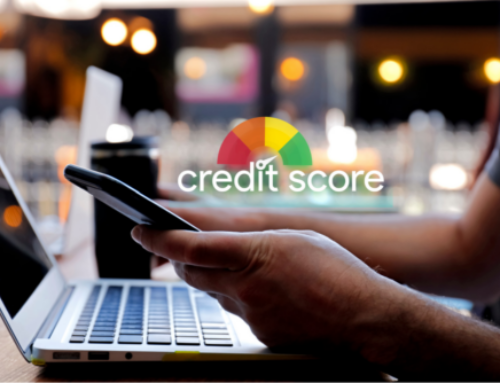
In fact, as of 2016, our collective consumer credit card debt climbed to $927.1 billion, up $21.9 billion in just the third quarter of 2016 alone. Among households who do have credit card debt, the average balances add up to $16,061, ballooning up to an average of $132,529 if you add in mortgages, auto loans, and other debt.
What is our credit card debt really costing us?
All of that credit card debt results in high monthly payments, diverted funds from savings, and credit scores and debt ratios that are out of whack, and preventing Americans from buying a home like never before. In fact, the current homeownership rate of 63.4%, the lowest percentage of homeowners since the mid-1960s, despite interest rates sitting near historic lows for years now.
The best way to become debt free if you have multiple credit cards.
While most people have good intentions to pay off their credit card debt, the result too often falls short. People throw a lot of money (and a lot of stress!) into their credit cards at first, only to see their debt level remain about the same – or even go up – over time.
However, there is a proven strategy to pay off credit card debt that gives you the best chance of becoming debt free. Today, we’re going to talk about that method, called Debt Snowballing. Not only is Debt Snowballing an extremely effective way to pay off your credit cards, but it also comes from a well-respected source in the financial world – money advisor and TV personality Dave Ramsey.
What is Debt Snowballing?
Debt Snowballing is a system that helps you pay off your credit card debt (or other debts) in the quickest and most effective way through regular monthly payments. In the Debt Snowballing process, you’ll allocate extra money (above minimum payments) to only one of your debts at a time until you pay it off completely.
At that point, you take all of the money you’re saving (by not having that monthly payment on that first debt anymore) as well as the extra money and pay down your second debt, and then your third, etc. until you are debt free. Of course, you’re paying the minimum payments on all of the other debts during this process to keep them in good standing.
This strategy really gains momentum as pay off your debts and there is more and more money freed up to pay down remaining debts quicker, hence the metaphor of a snowball rolling downhill. Once your last debt is paid off, you then are debt free and have freed up all the money you were allocating to monthly payments, which can be used for savings, buying a home, or investments.
A look at debt snowballing in action:
This is a paraphrased example right from Dave Ramsey’s website:
Let’s say you have the following debts:
- $500 medical bill (payment of $50 a month)
- $2,500 credit card debt ($63 payment)
- $7,000 car loan ($135 payment)
- $10,000 student loan ($96 payment)
List the debts in that order (remember, ignore the interest rates). Start by making the minimum payments on everything but the medical bill. For this example, let’s say you find an extra $500 each month to go toward that debt by getting an extra job, tightening your budget, etc.
Since you are paying $550 a month on the medical bill (the $50 payment plus the $500 extra), that medical bill will be paid off in one month.
Now, take that $550 and start paying the next biggest debt, the $2,500 credit card.
You’ll be paying $613 on that card (the freed up $550 plus the $63 minimum payment,) so in about four months, you’ve paid it off!
Now we’re at the car debt. With $748 a month (the freed-up $613 plus the $135 monthly payment), you’ll pay it off in just 10 months.
Next is the student loan, our last debt, which can get the entire $844 a month. In 12 months, that will be paid off as well.
At that point, you are completely debt free – $20,000 in debt paid off completely in 27 months.
Dave Ramsey’s version of Debt Snowballing contains a small but CRUCIAL difference:
Dave Ramsey didn’t invent Debt Snowballing, but he is a staunch educator and advocate of the method for people to become debt free. However, Ramsey’s version has a small but crucial twist that makes it far more effective.
If you look at sheer facts and the way the numbers play out, debt snowballing works fastest when you focus all of your extra resources on paying off the debt with the HIGHEST interest rate first, no matter if the balance is big or small. Once that is paid to zero, you move down the list to the debt with the NEXT HIGHEST interest rate, and so on.
This is mathematically proven to be the fastest and least expensive way to pay off those debts.
But with Dave Ramsey’s method of Debt Snowballing, it’s recommended you pay off your SMALLEST debt first, and then move to the SECOND SMALLEST, etc. on up the balance sheet.
Why does this small change give you the best chance of success?
Even Dave Ramsey readily admits that his method pencils out to taking slightly longer and paying a little more to become debt free. But he also understands that we’re dealing with human beings, not just numbers. Therefore, it’s critical to give people MOTIVATION and ENCOURAGEMENT when they start to pay off their debts by getting one balance down to zero as soon as possible.
By starting with the smallest balance, they are setting themselves up for a victory as soon as possible, which will invigorate them to keep going. Otherwise, if they have to wait too long to pay off a higher-interest but higher-balance debt, they’ll feel like they’re paying forever and it’s not working, and are far more likely to give up.
But with this one small but incredibly powerful alteration to the debt snowballing method, the rates of success shoot through the roof. As Dave Ramsey always says, “Paying off debt is not about math, it’s about motivation,” and “Personal finance is 20% head knowledge and 80% behavior!”
But what if you start with the highest interest rate debt first?
If you have the motivation and the means to start with your highest interest rate card first, then go for it, because that’s technically the correct way. But in real life practice, what happens when most people start their Debt Snowballing with the highest-interest-rate debt first? You’ll be paying a very long time before you realize any progress, paying off that first card and gaining valuable momentum. Of course, it will work great if you can manage to get over that first huge hurdle, and you’ll even save a few dollars and a month or two. But in reality, there’s a much higher chance of you giving up and not paying off your debt at all by starting with the highest-rate card first.
The caveat to this is if you have a credit card with a high-interest rate but a low balance, so it still won’t take too long to pay off first.
***
Paying off your credit cards, whether through Dave Ramsey’s Debt Snowballing method or any other way, is just the first step in a process for financial security. Paying off (and especially closing) credit cards could actually negatively impact your credit score, and there are some cards you’ll want to keep open and in good standing, just with small balances.
Come talk to use before you start a Debt Snowballing plan or any other campaign to pay off credit card debt and improve your finances, as we can provide some tools and resources to make sure you have more money in the bank AND a great credit score!




